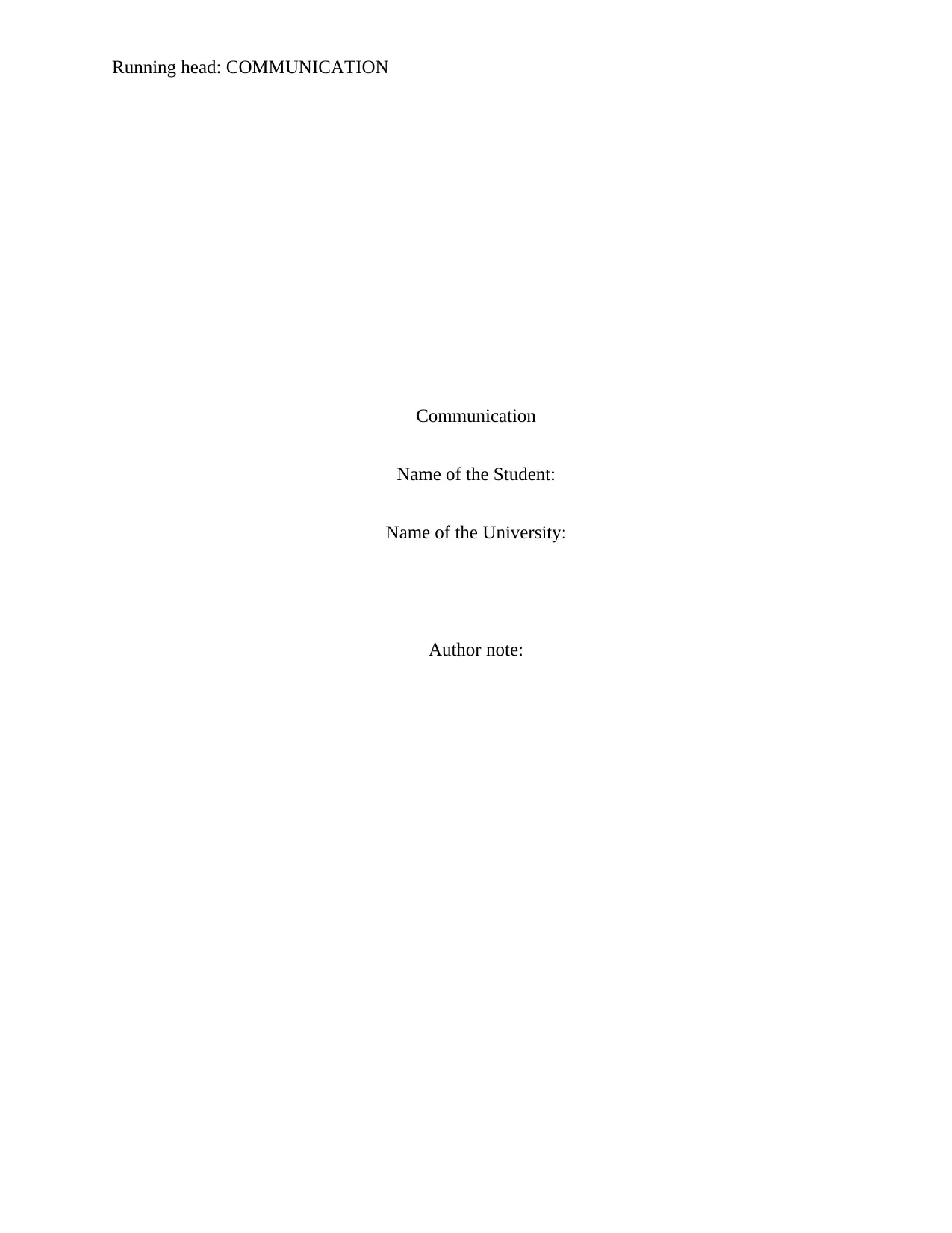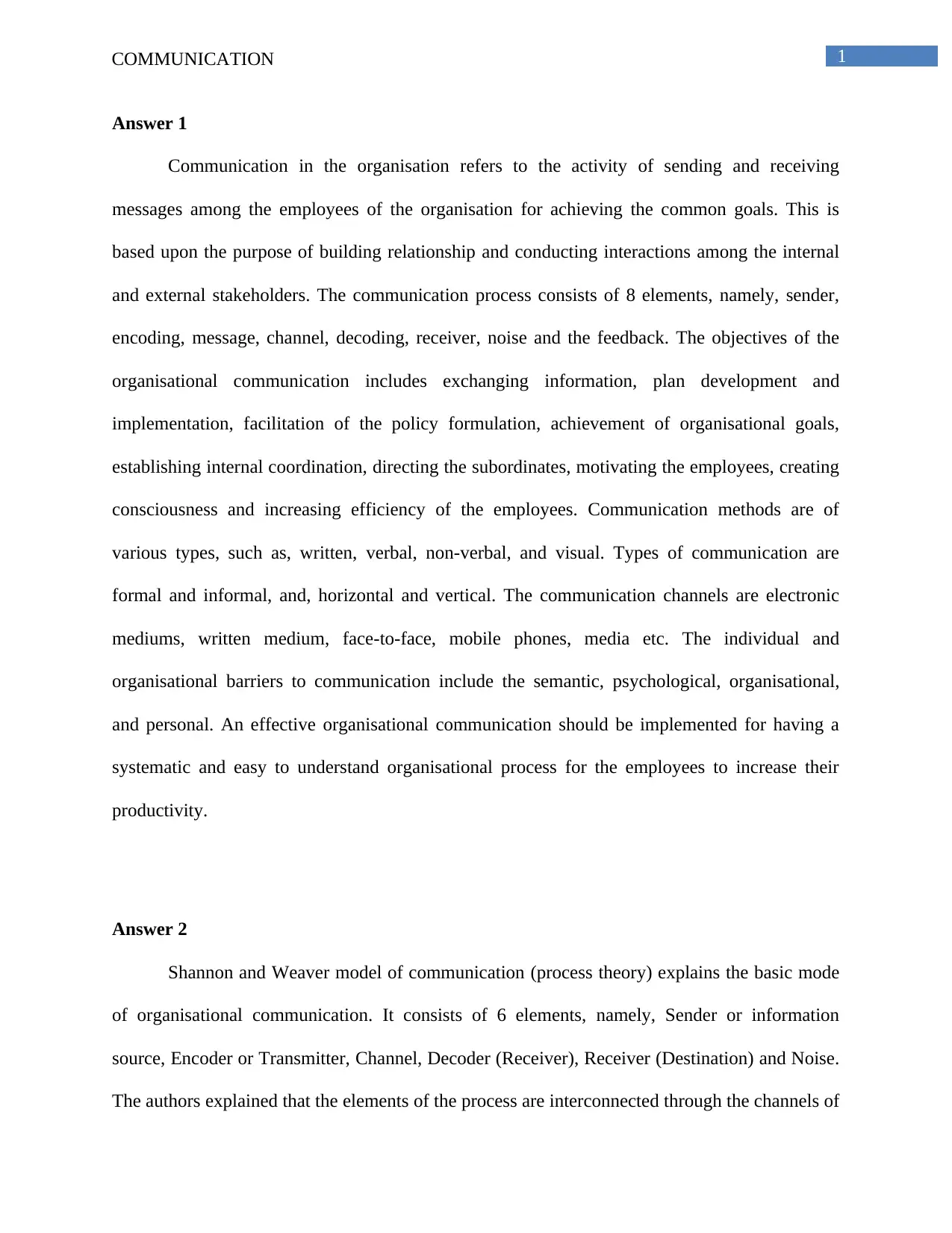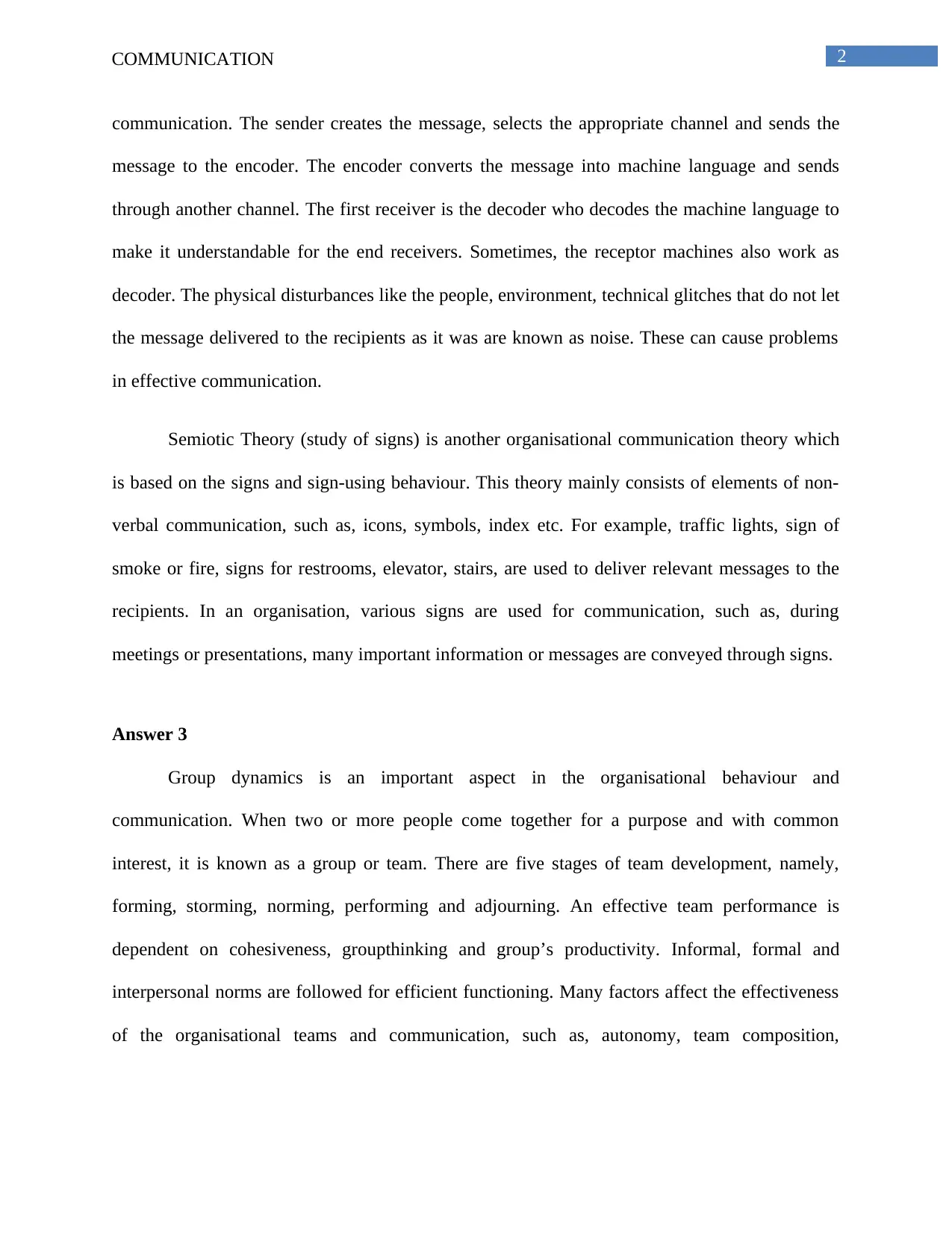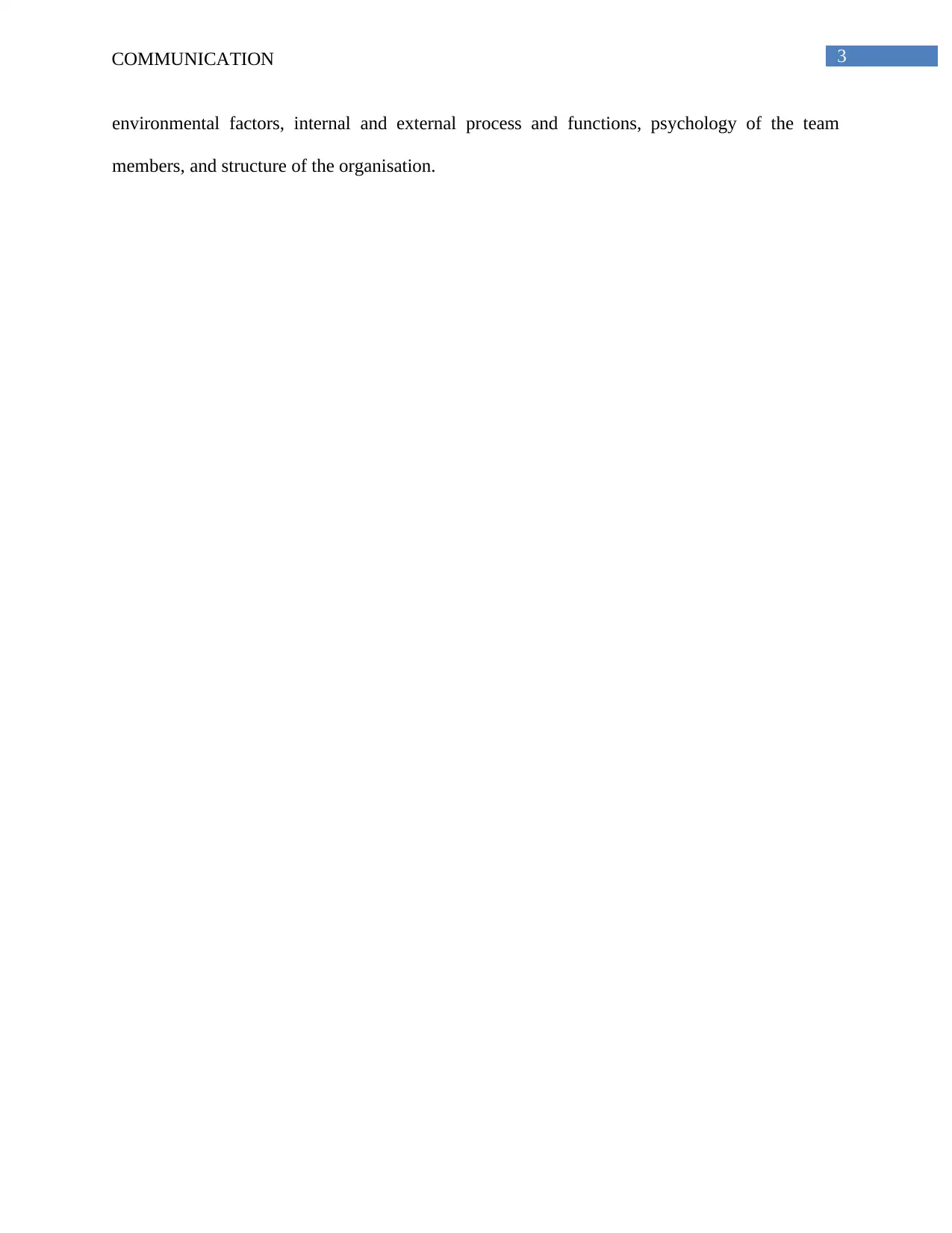Effective Communication Strategies in Modern Organisations Assignment
VerifiedAdded on 2023/04/20
|4
|635
|379
Homework Assignment
AI Summary
This homework assignment delves into the multifaceted realm of organisational communication, exploring its definition, processes, objectives, and various methods and types. It examines communication channels and the barriers that can impede effective information exchange within organisations. The assignment provides detailed answers on communication theories, including the Shannon and Weaver model and Semiotic Theory, providing a comprehensive understanding of how messages are sent, received, and interpreted. Furthermore, it analyses the importance of group dynamics, the stages of team development, and factors affecting team effectiveness, such as cohesiveness, groupthink, and the impact of norms. Overall, the document aims to provide a holistic view of communication's role in shaping organisational behaviour and success.
1 out of 4











![[object Object]](/_next/static/media/star-bottom.7253800d.svg)